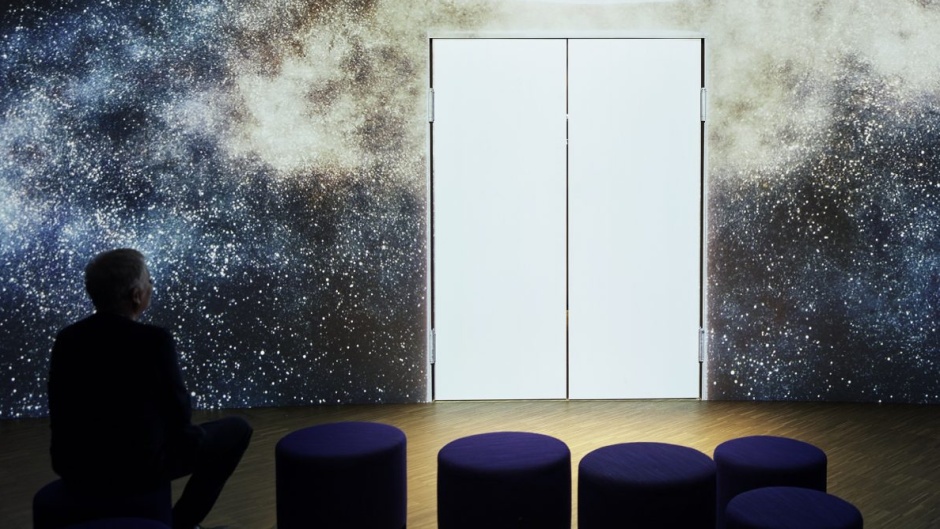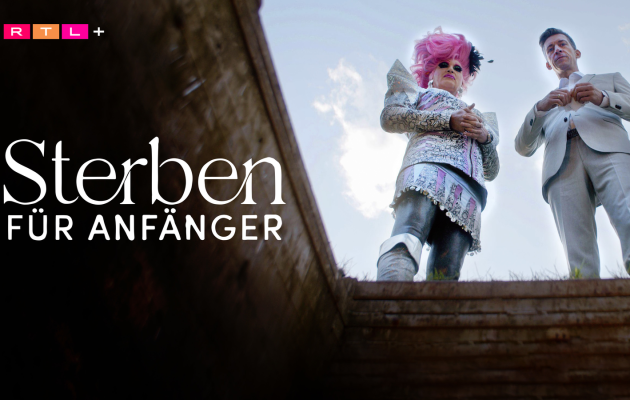Very close to death
In Berlin, an exhibition shows death up close and personal. It’s certainly not for everyone, but still a fascinating experience.
Pro Medien Magazin · BERLIN · 13 APRIL 2023 · 15:06 CET

At the end there are many colourful lights. One last big firework. They buzz before the eyes, blue, pink, purple, yellow. A cocktail of noradrenalin, serotonin, dopamine. Then suddenly silence. It goes dark. This is what it’s like to die, science says.
The door opens and you’re out into the light. Not into the heavenly realm, of course. Just into the next room, a white corridor.
This is what visitors to the exhibition “un_endlich. Living with Death” in Berlin’s Humboldt Forum. Until mid-November, they can not only experience their own death here in the heart of the German capital, but also see, read, hear and reflect on all kinds of fascinating things about the end.

A view of the 'un_endlich' exhibition in Berlin, Germany. / Photo: RFK Architects, Tom Piper, Stiftung Humboldt Forum im Berliner Schloss, Alexander Schippel. Faith in view
The tour begins with a look at the world’s religions. In various tents, Muslims, Christians, Hindus or even agnostics like the criminal biologist Mark Benecke talk acoustically about the life after death as they imagine it. Or not imagined. For Jasmin El-Manhy, priest at the Samariterkirche in Berlin-Friedrichshain, there is comfort and support in saying goodbye. And the hope of resurrection, as found in the biblical story of Easter.
A room, white and lined with semi-transparent cloths, invites you to rest on wellness loungers. With the help of headsets, those lying down then deal with questions about life and death: Have you ever thought about your own funeral? Do you believe in life after death? Is there a good death? The answers, “yes” or “no”, are collected, evaluated and can be seen in percentages in the further course of the exhibition.

A view of the 'un_endlich' exhibition in Berlin, Germany. / Photo: RFK Architects, Tom Piper, Stiftung Humboldt Forum im Berliner Schloss, Alexander Schippel. A video conference edited together, the “Conference of Dying”, provides information about the dying process. It shows people from all over the world who are involved with the topic in their function. A hospice nurse, a companion for the dying or a monk talk about how the body of a person who is about to die feels different from that of a healthy person. What the last wishes of dying people are. And what last breaths sound like.
Burial according to official standards
The heart of the “mortuary” is an autopsy table, converted into a kind of television. A film runs on its surface. On the one hand, it shows a ritual Islamic washing of the corpse, on the other hand, a funeral according to DIN standards (the technical standards used in Germany to carry out quality assurance of industrial and scientific products), as it is carried out by secular undertakers.

A view of the 'un_endlich' exhibition in Berlin, Germany. / Photo: RFK Architects, Tom Piper, Stiftung Humboldt Forum im Berliner Schloss, Alexander Schippel. However, no one gets to see the dead body itself; the cloths and ablutions only hint that there might be a corpse lying there. Showing it would probably be too much even for an exhibition devoted entirely to the end of life.
But the exhibition does not stop at the transience of the individual. Graphics and overview maps provide information about the most common causes of death worldwide, average ages at death and even the extinction of species worldwide.
A hope ahead?
One of the last rooms in this thoroughly doomed show looks like a section in the natural history museum. Cylinders of preservation fluid display extinct and endangered species, such as the smoky grey fruit bat or the Javanese pangolin. The numerous empty containers are to be understood as a reminder: They will soon fill up if we do not change our way of life.

A view of the 'un_endlich' exhibition in Berlin, Germany. / Photo: RFK Architects, Tom Piper, Stiftung Humboldt Forum im Berliner Schloss, Alexander Schippel. “Un_endlich” is an impressive exhibition reminiscent of theatre. As if divided into different acts, the visitor first approaches his or her own death, then takes a step back again and contemplates the world.
Walking through the rooms is like a meditative experience that has special relevance for Christians at Holy and Easter time, the time of life, death and resurrection.
This article was first published in German by Pro Medien Magazin, and translated into English with permission.
Art rediscovers death

Death as a subject of artistic and media debate is in vogue. This may be due to the way each of us is currently challenged to deal with it. War and pandemics have brought it closer to us in the West than it has been for a long time. And German politicians have had to plague themselves for months with the question of how to find a new euthanasia regulation.
Apparently there is a longing for knowledge, a longing to develop a sense of the inevitable. German broadcaster RTL recently made headlines with an unprecedented documentary called "Dying for Beginners", to name just one example.
Now comes the exhibition at the Humboldt Forum. It will not be the last of its kind.
Published in: Evangelical Focus - culture - Very close to death
